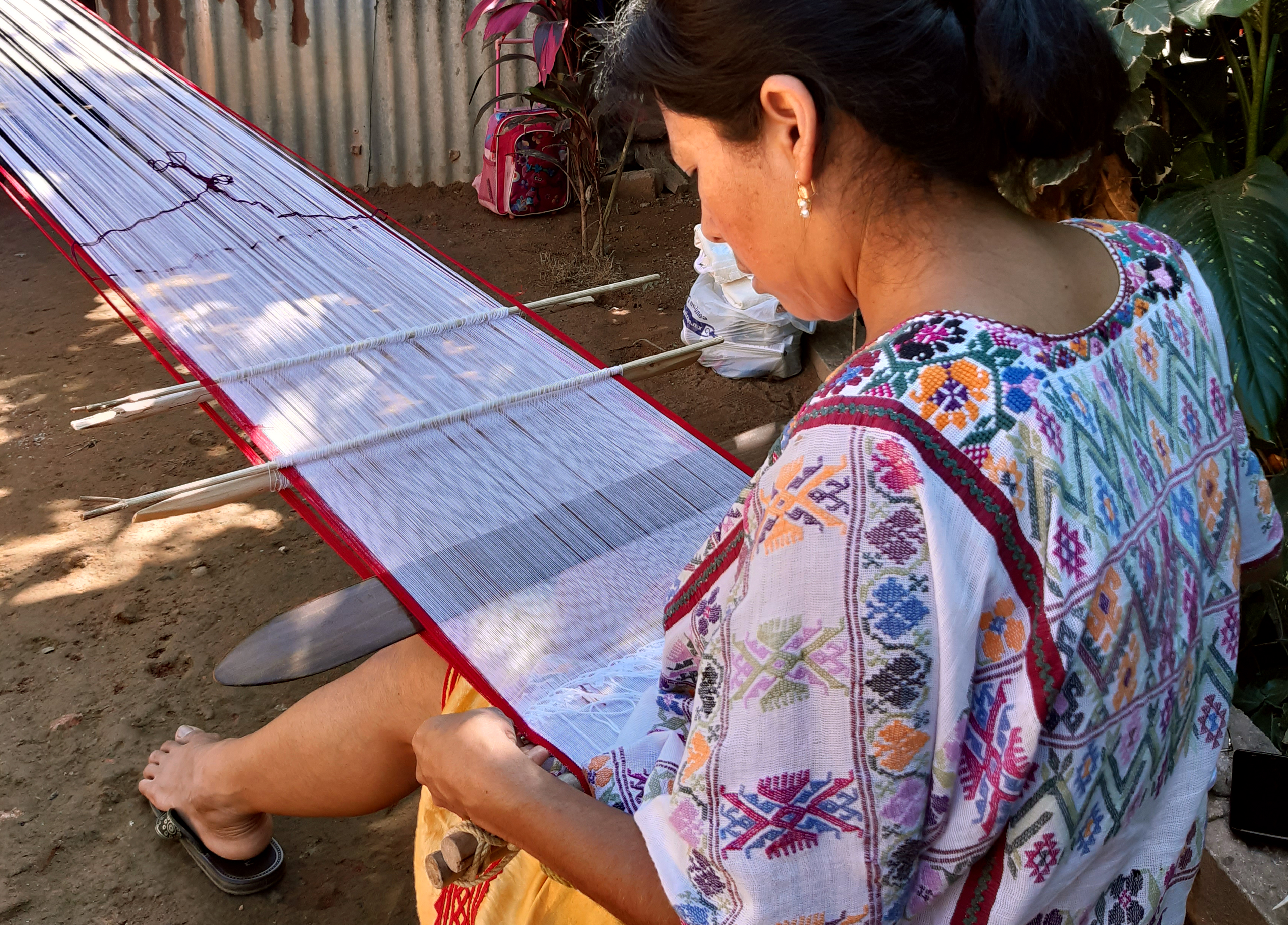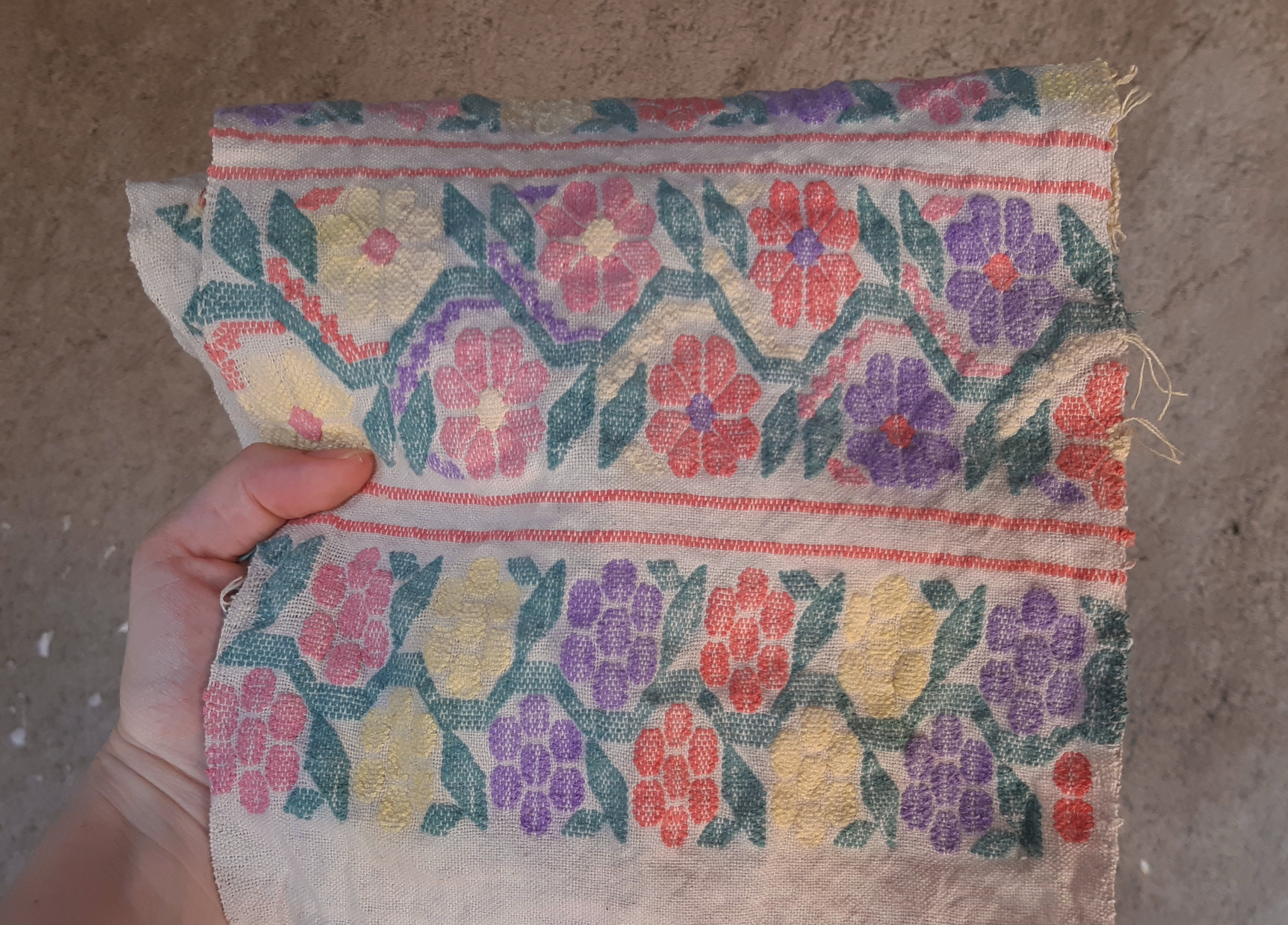Weaving is a textile production technique where two different sets of yarns interlaced horizontally and
vertically. The vertical threads are nominated the warp and the horizontal
ones the weft. The warp is the backbone of the weave that holds the tension
needed during the process, while the weft creates the patterns and designs.
The most common device used for interlacing the threads is a loom. There are several types of looms and each culture developed their own weaving methods and tools. Most woven products are created with basic weaves such as plain weave and satin weave/twill. The weaves may vary according to the warp and weft densities, counts, yarn thickness/structure, width/ length and the set up of a loom. In certain cultures, to weave has become a symbol of cosmic creation and the structure upon which individual destiny is created.
Amuzgo women start from the early age of seven to weave on a backstrap loom. The backstrap loom consists of a series of wooden rods and beams that support the threads that are tied up from an upper end to a tree/wall and on a lower end to the weaver’s waist. Heddle rods are used to lift the even threads (warp) to create a gap for the horizontal threads (weft) to be inserted. With the help of a wooden “machete” the weft is beaten and tightened together. By repetitively repeating these steps, this women weave garments such as huipils (traditional loose-fitting tunic), rebozos (traditional scarf/shawl) and household items such as napkins and table runners. It can take weeks up to a year to weave just one garment and take even longer to assemble and finish the fabric with complicated decorative hand stitching, embroidery and braiding techniques.
All woven pieces are unique and not alike. These women practise three main weaving techniques:
- The brocade: a supplementary weft technique, where extra threads are manually added to the standard weaving process and gives the fabric the appearance that it has been embroidered.
- The gauze: a loose open weave structure made by twisting adjacent warps together, giving the fabric a thin, open, and transparent look.
- The “concha de armadillo”: a sort of brocade gauze, where the woven gauze is filled with supplementary weft threads.
The most common device used for interlacing the threads is a loom. There are several types of looms and each culture developed their own weaving methods and tools. Most woven products are created with basic weaves such as plain weave and satin weave/twill. The weaves may vary according to the warp and weft densities, counts, yarn thickness/structure, width/ length and the set up of a loom. In certain cultures, to weave has become a symbol of cosmic creation and the structure upon which individual destiny is created.
Amuzgo women start from the early age of seven to weave on a backstrap loom. The backstrap loom consists of a series of wooden rods and beams that support the threads that are tied up from an upper end to a tree/wall and on a lower end to the weaver’s waist. Heddle rods are used to lift the even threads (warp) to create a gap for the horizontal threads (weft) to be inserted. With the help of a wooden “machete” the weft is beaten and tightened together. By repetitively repeating these steps, this women weave garments such as huipils (traditional loose-fitting tunic), rebozos (traditional scarf/shawl) and household items such as napkins and table runners. It can take weeks up to a year to weave just one garment and take even longer to assemble and finish the fabric with complicated decorative hand stitching, embroidery and braiding techniques.
All woven pieces are unique and not alike. These women practise three main weaving techniques:
- The brocade: a supplementary weft technique, where extra threads are manually added to the standard weaving process and gives the fabric the appearance that it has been embroidered.
- The gauze: a loose open weave structure made by twisting adjacent warps together, giving the fabric a thin, open, and transparent look.
- The “concha de armadillo”: a sort of brocade gauze, where the woven gauze is filled with supplementary weft threads.






Weaving in this region is considered a women’s labour to do along with farming and household chores. It reflects the ideology and identity of their culture and unites them as a linguistic group for future generations. There has been an admirable effort from the older generations to preserve these techniques and symbolic representations while teaching and encouraging the younger generations to pursue these practises. Unfortunately, most of the textiles made are still for family use and this craft can’t compete with the machine-made cloth and the high demand for cheap labour.
TUYO establishes design programs that forge an ethnic identity and resist cultural standardization by motivating the weavers to restore symbols and create the ones that represent their times.
COPYRIGHT© 2023 ALL RIGHTS RESERVED
TUYO FOUNDATION - AMSTERDAM, THE NETHERLANDS
TUYO FOUNDATION - AMSTERDAM, THE NETHERLANDS
